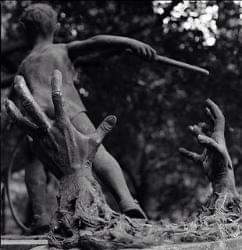A MOTHER‘S SEARCH FOR HER MISSING SON
This mother, holding up a picture of her missing son to a returning prisoner-of-war in 1947 in Vienna captures the despair and forlorn hope that many parents experienced in the aftermath of wars.
Back in 1916, authorities informed Emma McQuay that her son, George, was missing on the Western Front. Over the following years, Emma received scant official information about his fate.
Even after the Great War had ended, Emma retained a flicker of hope that George was still alive.
Emma searched the faces of the homecoming soldiers, hoping to see George; she scrutinised newspapers and army records for clues on his whereabouts.
Although a single mother on a meagre wage, Emma engaged a solicitor to make enquiries, and appealed to the military authorities for information. No news came.
Each year, Emma attended the Anzac Day commemoration service. As she stood among the crowd watching the veterans march by, she found herself staring at their faces. This ritual seemed to lift her spirits. She always returned home with a renewed strength, convinced that George would come home one day. ‘George is not dead,’ she told her family. ‘He will come back. Yes, he will.’
Then, out of the blue, in 1928, a journalist visited Emma in Taranaki New Zealand. He thrust a photograph of George under her nose and told her that her son was alive. Emma exclaimed, ‘Yes! That is my George. God bless him.’
George was indeed alive. He had languished for ten years in Callan Park Mental Hospital in Sydney, Australia. Emma and George were eventually reunited.
Like Emma, many parents clung onto the fading hope that perhaps their boy might have been wrongly reported missing. Unfortunately , this rarely proved to be the case.











Comments
Post a Comment